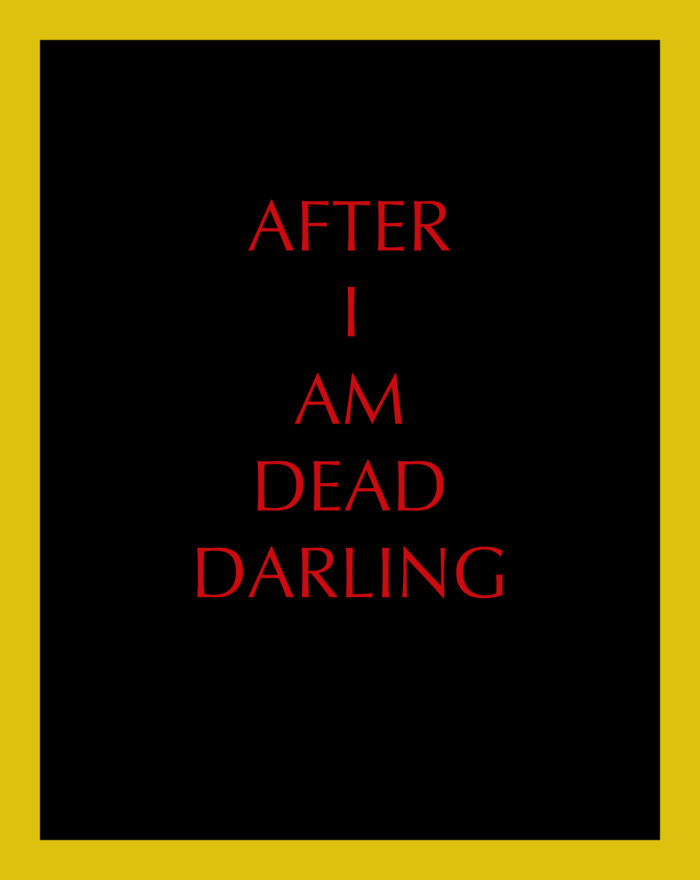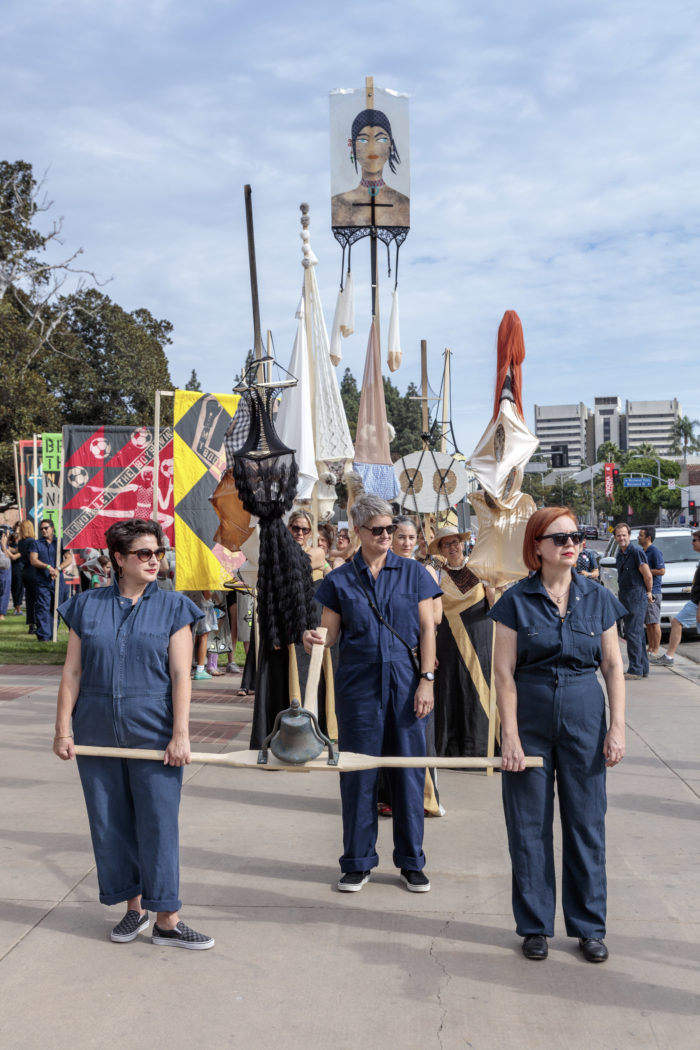
“The funny thing about a fair,” Adrienne Edwards muses, “especially being on an island, is that it has this feeling of isolation and enclosure.” Edward’s, who has curated the first iteration of Frieze Live in New York, marks a radical break with the typical programming of the Frieze Art Fair. Her series of time-based interventions titled “Assembly” brings together some of the most daring and politically energized artists working today- its full line up including Renée Green, Alfredo Jaar, Dave McKenzie, Raúl de Nieves with Erik Zajaceskowski, Adam Pendleton, Lara Schnitger, and Hank Willis Thomas. Edwards spoke to Cultured about the Assembly’s aim to crack open the boundaries of the art fair infrastructure or in Edward’s words, “hold space for the fact that there is a lot going on around our world, in our country, but also in the communities that flank Randall's island.”

You will be curating the Live Program at Frieze Art Fair, titled “Assembly.” Can you give some context to what the term “Assembly” means to you? This notion of “Assembly” is comes from a lot of different places. On the one hand, it’s assemblage—this idea that many different things can come together around a certain commonality but be diverse and varied. It also comes from early thinking around politics, and society through writers like C.L.R. James, who talks about the notion of assembly as enacting a creative social power. I always thought that was a beautiful and poetic way to think about it.
How do these ideas surrounding “Assembly” fit into the performances that will be at Frieze? You can’t re-perform the kind of activism and rallying that is going on throughout the country and beyond, but you can certainly look at how artists are responding to it. Like Ritkrit’s [Tiravanija] recent flag project, and the posters by Paul Chan’s Badlands Unlimited. So, I felt like there’s something in the air in terms of how artists uniquely engage with and create a paradigm to acknowledge the fact that our world is changing in so many ways. For Assembly, I was interested in the visual language that marked that.
As the performances will be so visually dynamic, it’s important for me that they all had this feeling of profound openness, not subject to resolve, so that people could engage with them at the level they they desire. For example, Renée Green’s banners are really poetry in fabric. Ditto for Raúl [de Nieves’s] and Erik [Zajaceskowski’s] performance- both will be visually and sonically lush, so I was interested in how these beautiful and conceptual expressions could be an open field to think through some of the issues that the artists are confronting.

You’ve mentioned a feeling of impossibility around enacting Assembly, in an art fair context in particular. Are the structural boundaries of an art fair something you’re interested in pushing against? Absolutely, it’s quite intentional. The important thing for someone like me, is to ask the question, “what is voice like mine doing in an art fair?” The tone of this program is markedly different from the tone of other projects that have taken place in the same context. There’s subtle, and more direct ways I have done this.
I had done all this historical research, and discovered this point on Randall’s island that had been called, and is still referred to on geological maps, as “Negro’s Point,” and there’s these two rocks that jut off into the water from the point called “Negro’s Head,” and “Little Negro’s Head.” I just can’t do the work I do and not acknowledge that. I thought about what the right gesture to that could be.
With Adam Pendleton’s Black Dada Flag (Black Lives Matter), which we will present at this point, we gain the ability to take up space well beyond the confines of Frieze week (the flag will be installed through November, 2018). Pendleton’s flag will literally dance in the wind, something that will always be in motion, given that its at the nexus of the Harlem and East Rivers. So again, in a poetic way, it’s there to hold space, to manoeuvre itself, to bring a call to action.
Pendleton’s performance plays with duration- what other techniques are the artists utilizing to broach collectivity at Frieze? So [Alfredo] Jaar took this notion of “Assembly,” and found other voices, including artists, writers, and thinkers, that could be part of the piece through a sound installation that will play over the speaker system. The timing of the piece is very intentional, and there will be spaces where people may never hear them, and others where they will. So the sound is really being thought of, and rolled out in a performance in and of itself. It just happens to be recorded, but the way its implemented will be very performative. The same for Renée’s banners, which will also have a sound piece to accompany them. I tried to have these projects be containers for the various ways each of these artists work.

Thematically, do you notice relationships between any of the artist’s performances? The relationship between what Hank [Willis Thomas] and Dave [McKenzie] wanted to do made their works bookend each other.
I was visiting Hank’s studio, and he was working on this new piece made of fabric, and I already was really loving the fabric pieces he has been making from prison uniforms- it’s very abstract, beautiful work. This time, it seemed like he was working on a flag, and I said, ‘What is that?’
Hank said, it’s a star for every person who has been killed from gun violence in 2016 and 2017. Then I said to him, ‘Will you make another one?’ I just immediately knew they would be perfect for flanking the entrance [of Frieze].
Then, in that same week, Dave said he really wanted to do something around black bodies, involving suspicion and movement. Dave comes out of print making, so his performances work with repetition in beautiful ways. There’s this subtlety to them, that makes you stop in your tracks.
So with Furtive Gestures, Dave [McKenzie’s] performance as a magician, he thought about gestures such as taking your cell phone out of your pocket, or even having your hands in your pocket, and how that depending on what you look like, can actually instigate fear, and therefore violence from people.
Lastly, you are in a moment of transition- as you prepare to take on your new role as Curator of Performance at the Whitney, what will you miss about Performa & being Curator at Large with the Walker? My time at Performa was really special, because in many ways, it functioned as this very experimental laboratory. I was there 8 years, and you get into a rhythm with the Biennial that is quite stimulating and rewarding, and the surprise element never ceases to amaze me. How you think you are going to do something, and ultimately end up shifting it quite dramatically. I think it’s the nature of commissioning works from artists – which obviously I will continue you do at the Whitney, but there’s something to having these two years to come to terms with whatever thematic or historical framework I’m interested in, or comes about in dialogue with [Performa founder and director] RoseLee Goldberg. It’s incredible, to have that amount of time to dedicate, and then for certain projects, a really short amount of time. I think I am really going to miss the cycle of working with colleagues to create- at least in the last Biennial–five solo shows in a three week time period…
As for the Walker, I probably had one of the sweetest gigs in the art world by being able to be ‘At Large.’ It was incredibly generous on the Walker’s part, who also was really respectful of who I was as a thinker and a curator, and what I could bring there. The museum has a very special history. For me, someone so committed to conceptual art, and abstraction, and other kinds of non-objective art, you couldn't ask for a better collection.










 in your life?
in your life?

